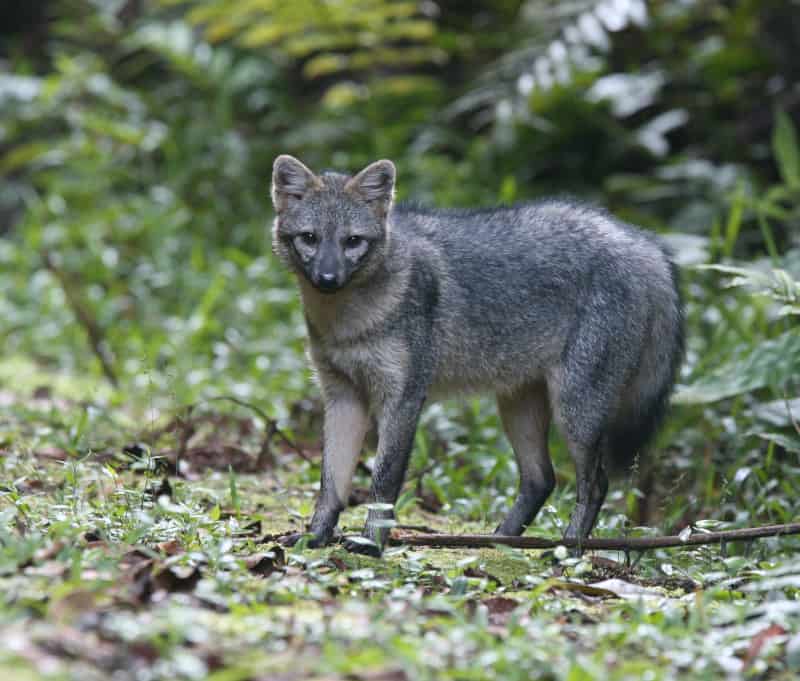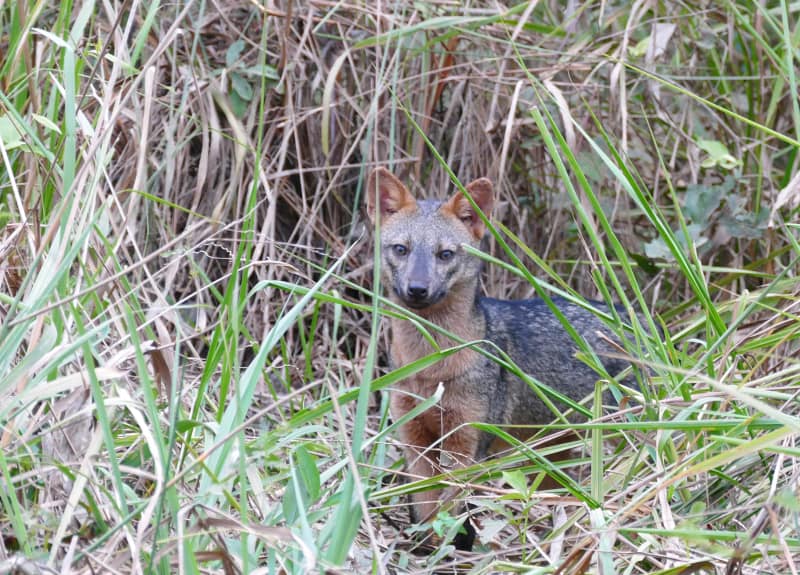
Principle Crab Eating Fox Facts
- First of all, the Crab Eating Fox remains a rather fascinating animal. Furthermore, it also ranks as an unusual moderate-sized species of wild canid. It also represents the only known living member of its genus. That fact alone makes the remarkable creature quite unique.
- In fact, the amazing animal possesses attributes of both dogs and foxes. This surprising fact makes it one of the few known species of wild canids to do so. Most of them share attributes of one or the other, not both.
- Fortunately for the truly fascinating species, the fur has no particular value to hunters. However, hunting by humans does still occur within its range. But fortunately, this practice continues to remain rather uncommon.
- Finally, in a move that comes as no great surprise to researchers, the IUCN now officially lists the animal as a Species of Least Concern. This occurs due to a combination of its current numbers and extent of known territory range.
Related Articles

Crab Eating Fox Physical Description
In general body structure, the Crab Eating Fox does not stand out from other related species. That holds true due to the fact that it closely resembles many other foxes. Its distinctiveness originates from other factors than appearance.
Firstly, this amazing but small animal only averages about 25.3 in (64.3 cm) in total body length. This measurement excludes the tail, however. This appendage measures about 11.2 in (28.5 cm) in length. Furthermore, its weight sometimes reaches as much as 17 lb (4.5 kg).
Secondly, the coloring of the fascinating creature remains most commonly a grayish-brown. But it also shows some areas of red on the face and legs. Further, the throat and stomach often present a creamy white. In addition, the fur stays relatively thick and short.
Thirdly, the remarkable species also presents a fairly broad black streak on the back legs. In addition, the ears of this canid develop a decidedly rounded shape. These generally develop set comparatively wide, and often appear tipped with black.
- Kingdom: Animalia
- Phylum: Chordata
- Class: Mammalia
- Order: Carnivora
- Family: Canidae
- Genus: Cerdocyon
- Species: C. thous
Crab Eating Fox Distribution, Habitat, and Ecology
Perhaps most notably of all, the Crab Eating Fox remains the extent of its range. It evolved as endemic to a moderately extensive area. In fact, that territory range extends from Colombia to Northern Argentina, in South America.
Yet, within that very specific range, the surprisingly impressive mammal inhabits a rather wide variety of habitats. Because of its adaptability, its areas of habitation include woodlands, savannas, and subtropical forests.
The animal often resides in thickets and in areas of plains. Yet, within all these regions, it prefers, when possible, to live near riverbanks. Partly due to this tendency, the species draws its common name from its rather unique diet.
During the wet season, many will hunt for crabs on the floodplains. The species evolved as an opportunistic omnivore. However, it will also consume insects, eggs, fruit, lizards, and even birds. Hunting usually is done in small packs.
Finally, the resourceful carnivore usually place its burrows near bushes or in areas of tall grass. This helps conceal it from its own predators. Most individuals will construct their own if necessary, but prefer to utilize those left by other creatures.
Species Sharing Its Range
Check out our other articles on Sensational Christmas Namesakes of the World, Mandarin Duck, Giants Causeway, Wax Currant, Mary River Turtle, Asian Giant Hornet, Spiny Butterfly Ray


